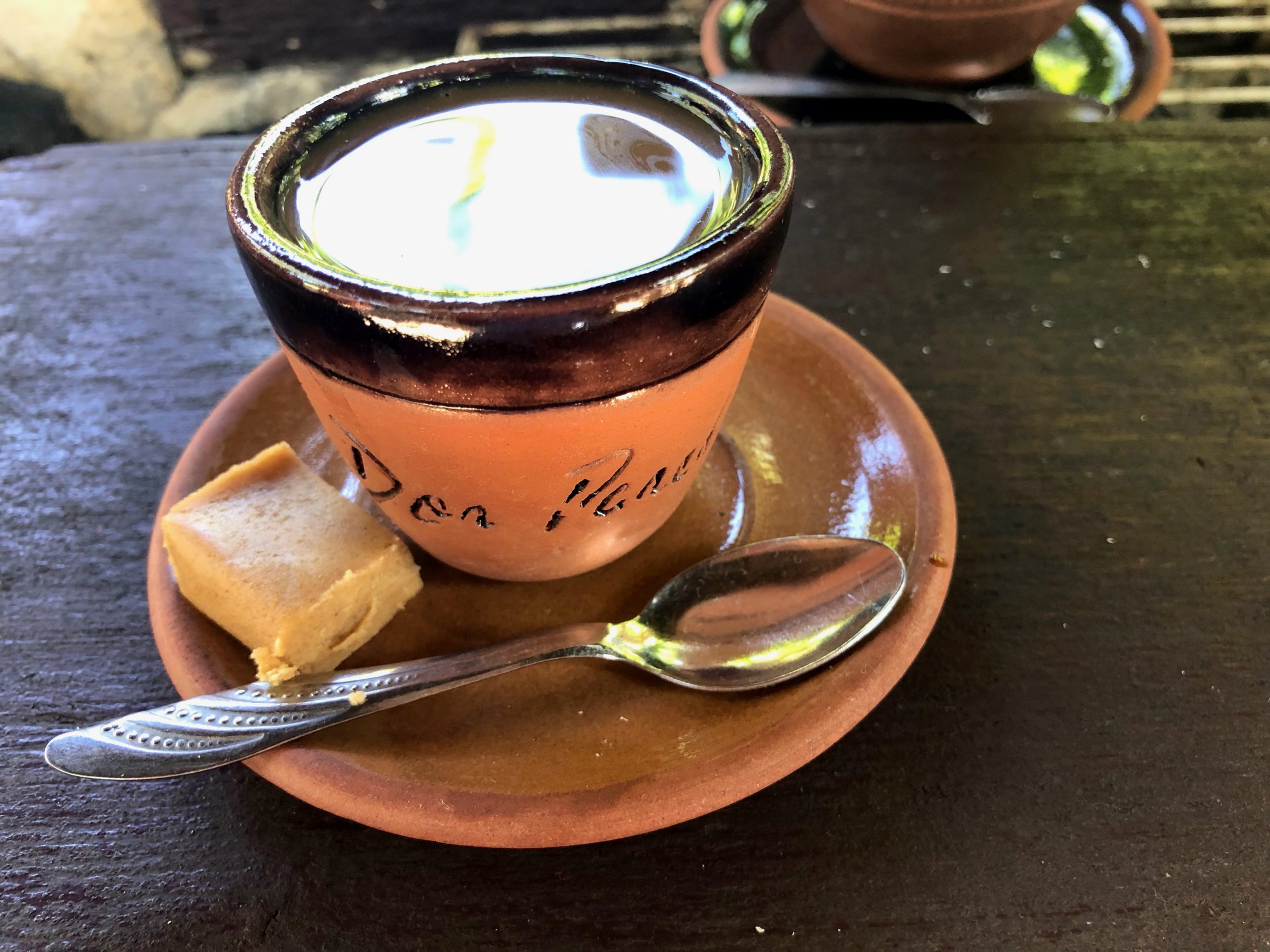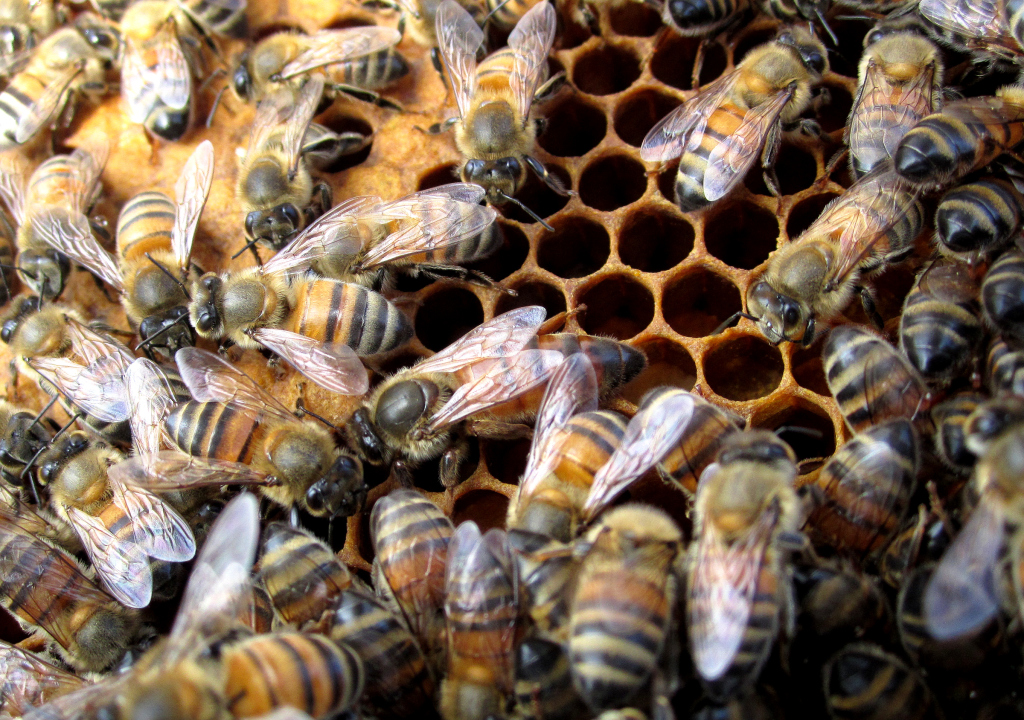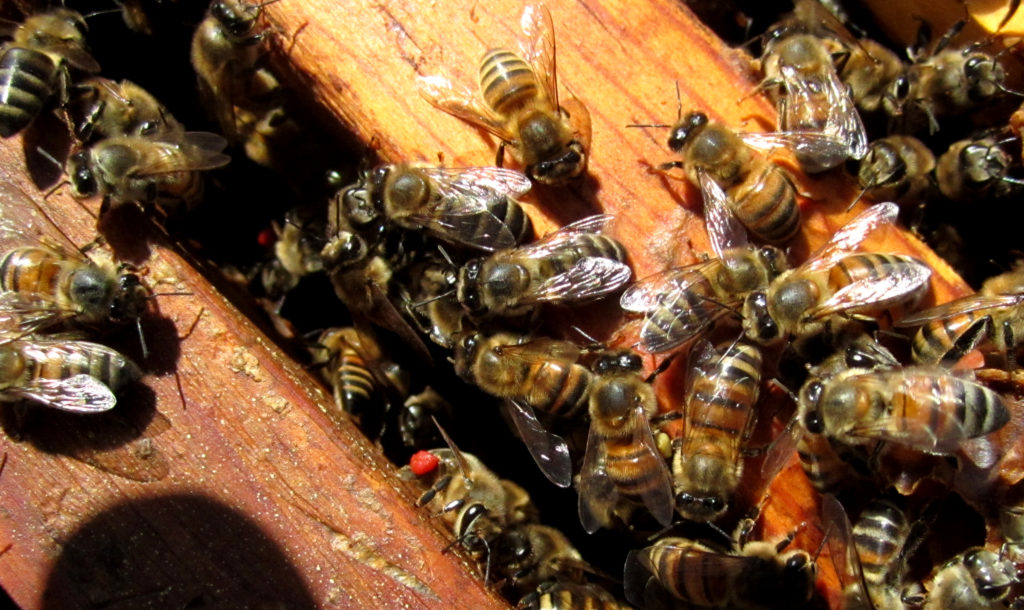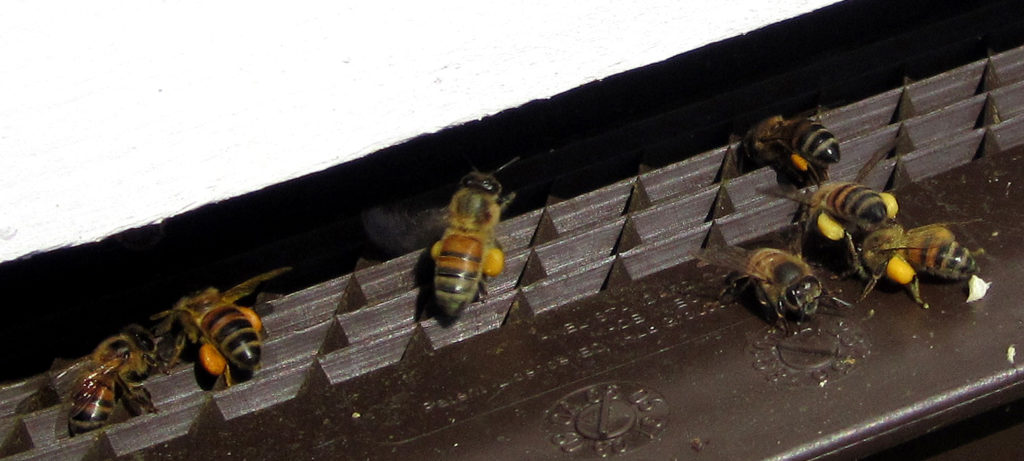





Poke Tacos Monkeypod

Tomato Tart - Jose Andres

LuLu Dog treats

Soup Alexis Alvarez Armas

Cafe Cubano

Riva @ Gritti Palace













OIL & HONEY EDITION
Bees are interesting creatures. They live peacefully together, thousands to a home. They work together to protect the queen, raise brood, clean the hive, build comb, produce honey, forage for nectar and pollen, control the temperature inside and guard the hive. It’s a process that begins upon hatching, when the newly hatched bee cleans out the hatching cell for the next egg.
No single bee can survive without the others, a super organism. A hive consists of one queen, anywhere from 20 to 80 thousand female worker bees, and a few hundred drones, or male bees. In the photo below you can see the larger amber colored “Queen” in the center surrounded by female worker bees.

Foraging bees must visit around 2 million flowers, 50 to 100 per flight to make 1 pound of honey. Can you guess how many miles this averages out to? Collectively the hives flies around 55,000 miles – for a pound of honey. Did I mention that they are hard workers?
Flying at about 15 miles per hour bees have been doing this for somewhere between 10 and 20 million years. Bees forage for both nectar and pollen from flowering plants, trees and shrubs. Foraging bees carry the pollen in baskets or sacs located on their hind legs. Bee pollen is the food of the young bee and is approximately 40% protein. Considered one of nature’s most completely nourishing foods, it contains nearly all nutrients required by humans. Pollens gathered by bees are rich in proteins, free amino acids, and vitamins, including B-complex and folic acid. An easy way to add pollen to your diet can be found in this yummy smoothie recipe. In the first photo below you can see the bee with red pollen in her basket. The second photo shows bees returning to the hive with multi-colored pollen filling their pollen sacs.


Since we can reap the benefits from pollen we should appreciate that it takes one bee working 8 hours a day for one month to gather one teaspoon of pollen. Each pollen pellet, contains over two million flower pollen grains and one teaspoonful contains over 2.5 billion grains of flower pollen. Pollen is beneficial to our digestive tracts, energy levels, and can help alleviate allergy problems to name a few.
Now, if you want to find this magic substance be sure to buy from a reputable company or local beekeeper that you trust. Make sure that the pollen is free from pesticides and that the bee colonies are not treated with chemicals. You can find pollen in most health food stores and many farmers’ markets. Get to know your local beekeeper!


Linda,
What a great and informative post! 1 teaspoon of pollen= 1 bee+1 month of work , yikes!
I love your enthusiasm and work with the bees, and the fact that you are a “bee advocate” one could say.
It was great to meet you this weekend, i’ll stop by from time to time to read all about your bees
take care,
Paula
Hi Paula,
Little creatures – it’s hard work! SO glad you understand and appreciate the bees!